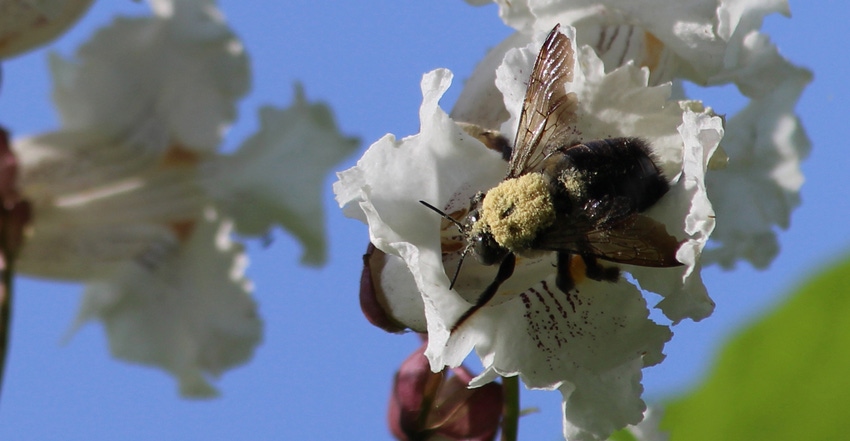
You’ve probably heard that bee populations have declined over the years. Colony collapse disorder, varoa mites and perhaps exposure to certain insecticides have taken their toll, especially on honeybees.
When you think of bees, you may think primarily of the European honeybee, but these are just a small component of the overall bee population. Native bees — like bumblebees, digger bees and sweat bees — are important, as well. Experts say these species have actually been found to be more efficient pollinators than honeybees.
This information about pollinators was prepared by Indiana Conservation Partnership personnel and other partners, led by a team of Natural Resources Conservation Service personnel. NRCS staff who contribute include: Don Donovan, Clint Harrison and Derek Schmitt, district conservationists; Susannah Hinds, grazing specialist; Scot Haley, resource soil scientist; Kris Vance, public affairs specialist; Victor Shelton, state agronomist/grazing specialist; Tony Bailey, state conservation agronomist; and Shannon Zezula, state resource conservationist.
4 ways to help
Harrison works with farmers who are helping all of these important pollinators. Here are four things he finds farmers doing that promote pollinator populations.
1. Consider the food needs of pollinators and provide it. You can supply a food source for bees by planting native flowering plants in your wildlife habitats. Native plants tend to bloom longer during the growing season. By providing a variety of flowering species that will bloom at various times during the growing season, you’re supplying food for bees at all times that they need it.
2. Be especially cautious when spraying or handling insecticides. Farmers who actually focus on protecting pollinators use caution when spraying, Harrison says. They spray on calm, dry evenings, soon after dark when bees aren’t active. Many try to use application setbacks near flowering plants. Others provide wider habitats to offer safe areas for pollinators.
3. Choose to no-till and not disturb the soil. This helps certain types of pollinators, such as ground-nesting bees that live underground. The best way to protect the habitat for these species it to adopt no-till. Soil is disturbed only minimally, if at all, in no-till fields.
4. Do what it takes to promote other pollinators besides bees. Bees aren’t the only pollinators struggling, Harrison says. Bats and monarch butterflies are also in need of protection. If you’re interested in helping pollinators, contact your NRCS district conservationist to find out what programs and practices are available for your area that might fit your operation.
About the Author(s)
You May Also Like




